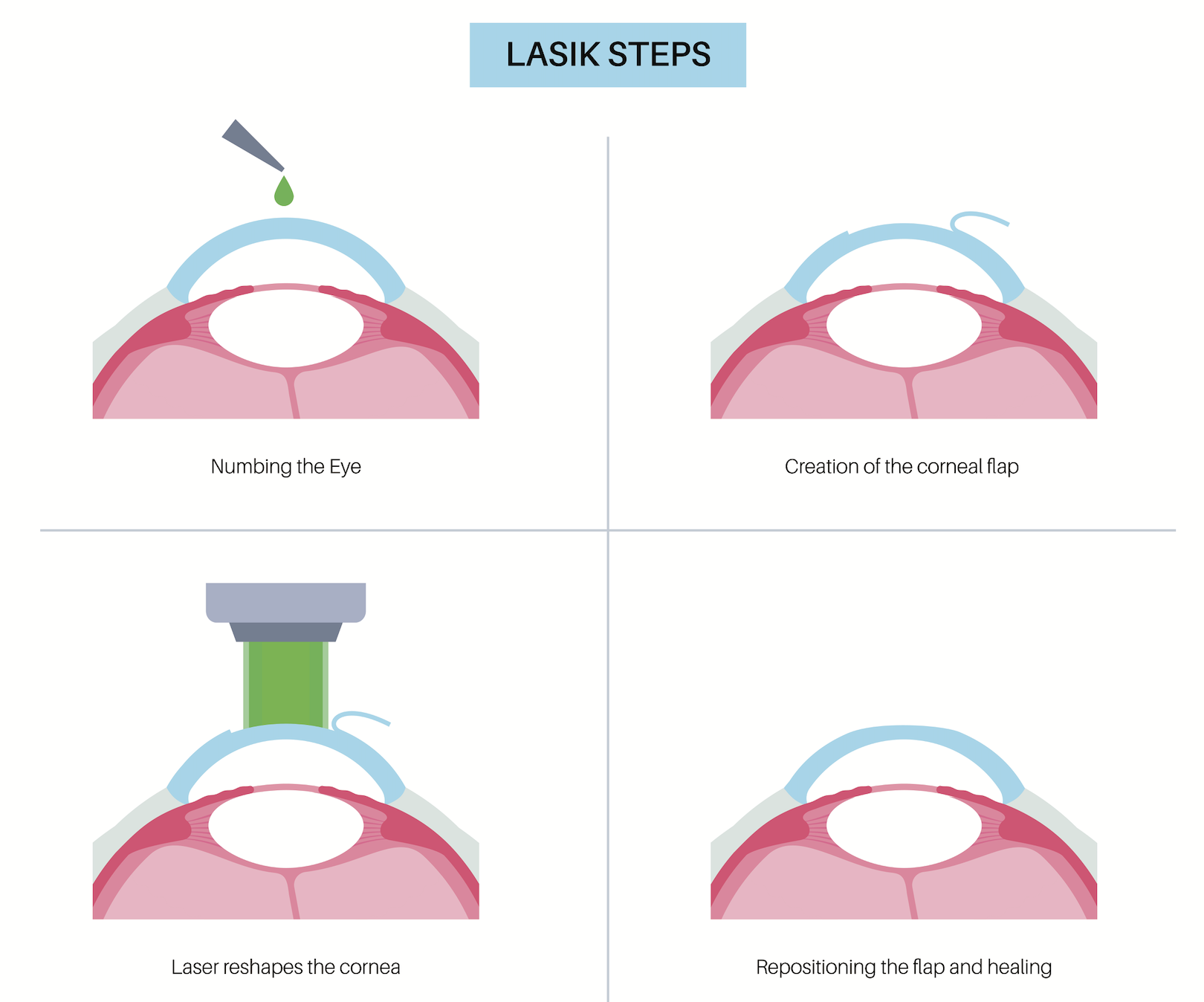What Are LASIK and PRK?
LASIK (Laser-Assisted In Situ Keratomileusis) and PRK (Photorefractive Keratectomy) are advanced laser procedures that reshape the cornea — the clear front part of the eye — to improve how light focuses on the retina. These treatments can dramatically reduce or even eliminate the need for glasses or contact lenses for people with nearsightedness, farsightedness, or astigmatism.
Both LASIK and PRK use a precise excimer laser to gently remove microscopic layers of corneal tissue and correct the eye’s focusing power.
LASIK involves creating a thin flap in the cornea, reshaping the underlying tissue, and then repositioning the flap for rapid healing.
PRK reshapes the corneal surface directly, without creating a flap, making it ideal for patients with thinner corneas, certain occupational requirements, or dry-eye tendencies.
What to Expect and Recovery
These procedures are quick, comfortable, and performed on an outpatient basis.
LASIK patients usually notice clearer vision within 24 hours,
PRK patients may experience a slower recovery, with vision improving steadily over several days to weeks as the surface layer heals.
During your consultation, Dr. Tadrosse will perform a comprehensive examination using state-of-the-art corneal imaging, topography, and wavefront-guided analysis to determine which option is safest and most effective for your unique eyes.
Typical recovery steps include:
Prescription eye drops to aid healing and prevent infection
Temporary protective shields or bandage contact lenses (for PRK)
Avoiding eye rubbing or heavy exertion for several days
Gradual improvement in visual clarity over time
Safety, Precision, and Results
Laser vision correction is among the most refined and reliable procedures in modern ophthalmology, with the majority of patients achieving 20/20 vision or better. However, achieving the best possible outcome depends greatly on the skill and experience of the surgeon. An experienced ophthalmic surgeon understands how to customize treatment parameters, manage healing responses, and ensure long-term visual stability and comfort.
Both LASIK and PRK are extremely safe when performed under expert care. PRK offers an excellent alternative for patients with thinner corneas, and both procedures yield equivalent long-term vision results once fully healed.
To maintain lasting results, patients are encouraged to:
Wear UV-protective sunglasses outdoors
Keep eyes lubricated and healthy
Schedule regular eye exams to monitor vision stability
This page is for informational purposes only and does not provide medical advice.
Find Out if You’re a Candidate!
Not everyone is a suitable candidate for LASIK or PRK — factors such as corneal thickness, stability of your glasses prescription, and overall eye health play an important role. If you’re considering laser vision correction, we invite you to schedule a consultation with Dr. Tadrosse to determine whether LASIK or PRK is right for you. At Nile Eye Care & Surgery, every patient receives a personalized, detail-oriented approach designed to maximize safety, comfort, and long-term satisfaction.

